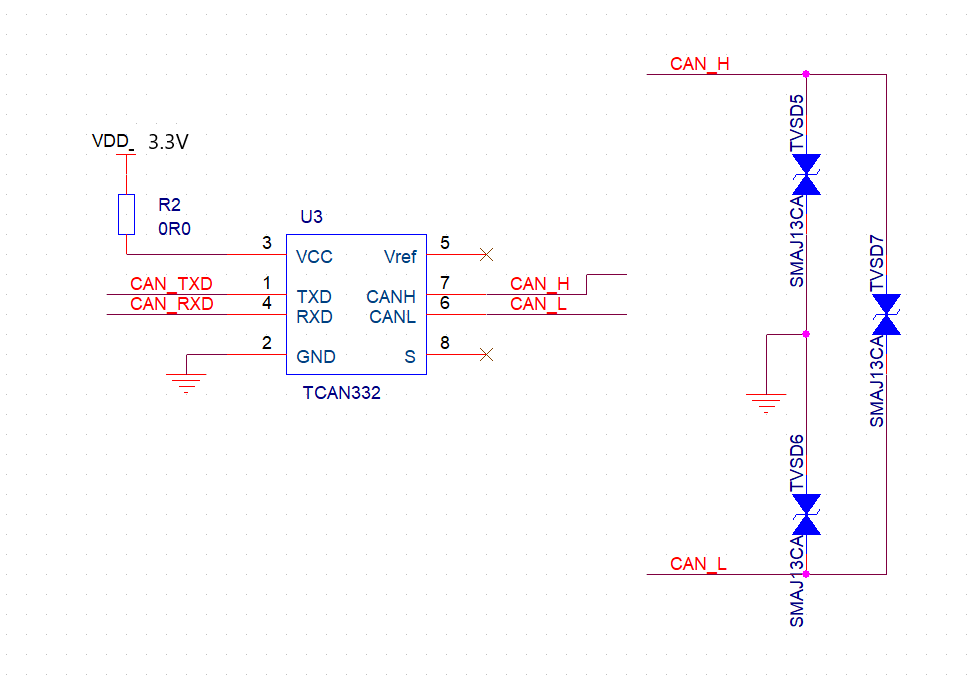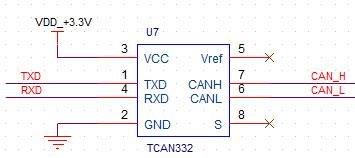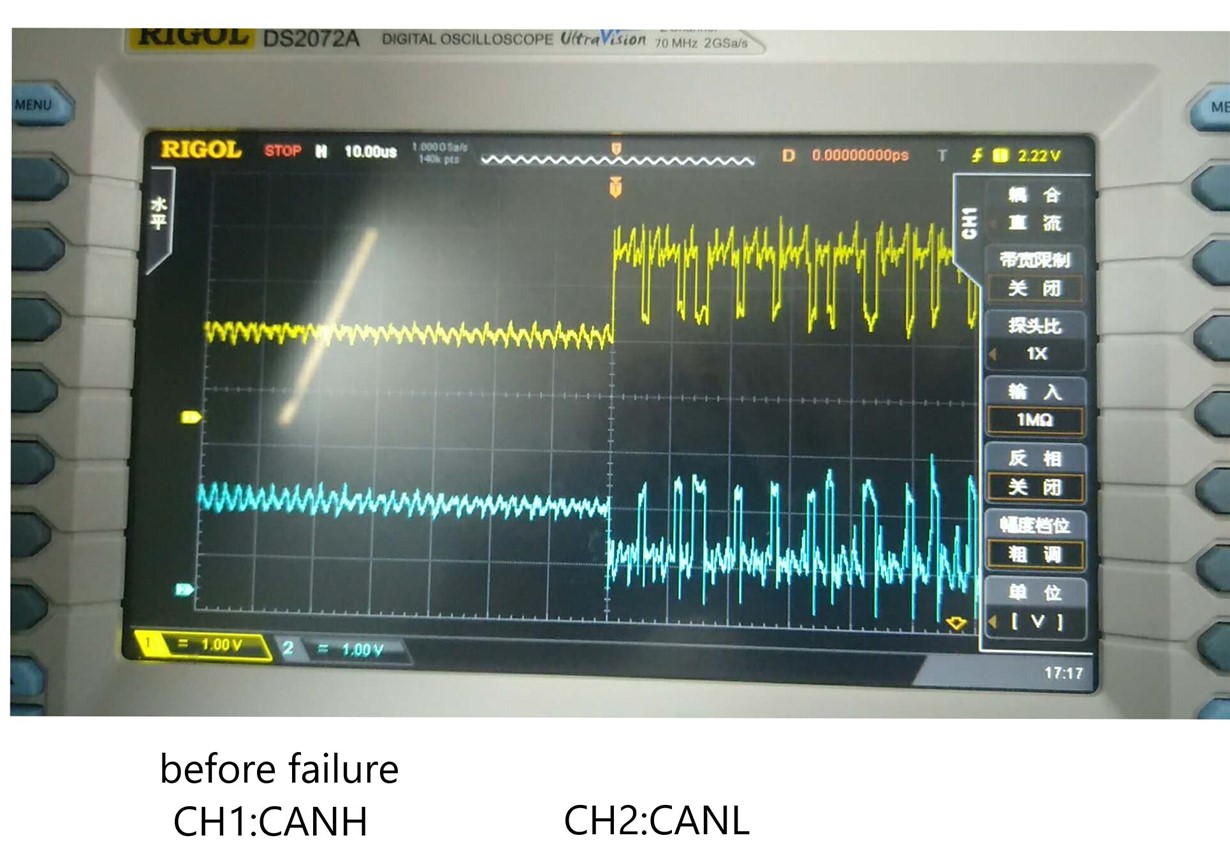TCAN332 3.3V power supply, in the process of communication failure, failure mode is bus U7 pin CANL to GND impedance to varying degrees to reduce or even short circuit. Under normal power-on and non-communication conditions, the chip bus pin to ground voltage is 1.8v, after failure, CANL to GND is less than 0.3V. At present, 9pcs chips fail 6pcs in the reappearing experiment.


-
Ask a related question
What is a related question?A related question is a question created from another question. When the related question is created, it will be automatically linked to the original question.

